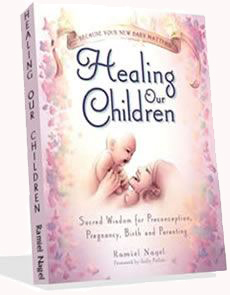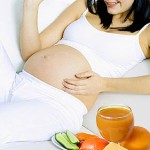 Seafood – the protein of the sea – has provided humans with sustenance for centuries. Our ancestors fished the waters far and wide to partake of its nourishing bounty. These foods not only fill our bellies, but encourage fertility among men and women. Rich in Omega 3 fatty acids EPA and DHA, zinc, protein and iodine, they are teeming with the building blocks for healthy conception. Oysters and fish roe are two foods that provide nutrient-dense nutrition and a much needed boost for infertile couples. This article will examine these foods and their role in encouraging fertility.
Seafood – the protein of the sea – has provided humans with sustenance for centuries. Our ancestors fished the waters far and wide to partake of its nourishing bounty. These foods not only fill our bellies, but encourage fertility among men and women. Rich in Omega 3 fatty acids EPA and DHA, zinc, protein and iodine, they are teeming with the building blocks for healthy conception. Oysters and fish roe are two foods that provide nutrient-dense nutrition and a much needed boost for infertile couples. This article will examine these foods and their role in encouraging fertility.
Oysters
This tasty shellfish is part of the mollusc family. Widely known as an aphrodisiac, it’s less well known as a fertility food. High in vitamin D, iron, zinc, iodine, selenium and copper these tasty morsels help set the stage for ideal baby making.
For Her: Vitamin D is crucial for your body before, during and after pregnancy. It is beneficial to the human body in so many ways; scientists have barely scratched the surface on its usefulness. Vitamin D plays a role in regulating estrogen; estrogen is one of the key hormones involved in egg follicle development.
Vitamin D, in fact, plays a substantial role in the female endocrine system. Dr. Lubna Pal of Yale University conducted a study of over sixty women with varying degrees of anovulation (lack of ovulation) and problems conceiving. According to Pal, over 90 percent of these women had low levels of vitamin D.
Vitamin D also reduces the instance of C-sections, according to a study done by Michael Holick, Ph.D., M.D., of Boston University1. In a study of 253 women, those who were vitamin D deficient at the time of giving birth had twice as many C-sections as those with normal vitamin D levels. Further analysis concluded that pregnant women with low vitamin D levels are almost four times as likely to have a C-section versus women with normal vitamin D levels.
For Him: Oysters are jam packed with three essential nutrients for male reproduction: selenium, zinc and iodine. Zinc and selenium are crucial to a man’s sperm count, quality and movement. The International Journal of General Medicine2 determined that a daily dose of 200mcg increased sperm motility among infertile men, and encouraged spontaneous pregnancy rates among their partners. Iodine is also an integral part of thyroid health. Low levels of the thyroid hormone T3 (triiodothyronine) lower sperm count and movement. In an infertility study3, 45 men with reduced fertility were treated with T3. Forty percent of these men increased their fertility. For more information about the roles of zinc, selenium and iodine in male fertility, please visit Iodine: A Vital Micro-nutrient for Male Fertility, ADHD and Autism.
Tip: For an inexpensive, easy and delicious way to incorporate oysters into your diet, I recommend Smoked Oysters by Crown Prince. They are packed in extra virgin olive oil and come in BPA-free cans. Add them to a salad or eat them as a snack right out of the can! You can buy them at Whole Foods or Trader Joe’s for about $2.30 per can.
Fish Roe
Fish roe are the ripened eggs of fish, popularly known as caviar. They are abundant in Omega-3 fatty acids, vitamins D and B12 and trace minerals. These eggs are a delicious delicacy, but they are also a traditional sacred food, prized for aiding fertility and lactation. Fish roe have been used for hundreds of years for conceiving, particularly salmon caviar, used by people in the arctic regions. Dr. Weston Price observed that these eggs were an integral component for fertility. He also observed that people who lived far away from the sea went to great lengths to obtain fish roe for their child-bearing women and men.
Studies have proven that low omega 3 levels have an adverse effect on male fertility. Fish eggs are one of the most superior forms of Omega 3; their omega3:6 ratio is approximately 10 to 1. Eating this food two or three times a week will definitely boost omega 3 levels in both men and women. Salmon roe is the best roe to eat for increasing omega 3 levels and fertility. Salmon roe has the highest levels of omega 3 compared to any other food; one ounce of salmon roe contains 1800mg of combined EPA and DHA, which is more than three times that of salmon.
Tip: For a delicious way to start your day, pair two pastured eggs (any style) with salmon roe and sliced avocado for a fertility charged breakfast. You can also pair salmon roe with sushi, or serve with lox, red onions, capers and homemade raw crème fraiche (see recipe at the end of the article), for a delicious twist on a classic Sunday brunch.
Ideally you should purchase wild Alaskan salmon roe or caviar (avoid farmed salmon roe at all costs). You can purchase this online or buy in a gourmet or specialty foods store.
Mother Nature, in her infinite wisdom, has provided us with foods that nutritionally sustain us and aid in fertility as well. Native people have been aware of the potency of these foods as a conception aid. Incorporate these foods into your diet and make them part of your ongoing tradition.
Recipe – Raw Crème Fraiche
1 cup pastured raw cream*
1 1/2 tablespoons whole milk yogurt, unflavored
Warm cream gently over low heat until a thermometer reads a temperature somewhere between 100 to 110 degrees. Put yogurt in a lidded container and whisk until smooth. Add a tablespoon of warmed cream and whisk in. Slowly pour in the remaining warmed cream, while stirring thoroughly. Put the lid on the container and place in a warm spot, 95 to 100 degrees, for 8 to 12 hours.
*If you cannot find raw cream or pastured cream, use non ultra-pasteurized heavy cream free of rBGH (bovine growth hormone).
by Taheerah Barney
___________________________________________
References
1.Merewood A, et al “Association between vitamin D deficiency and primary caesarean section” J Clinical Endocrinol Metab 2008, DOI: 10.1210/jc.2008-1217.
2. Moslemi, M.K., and S. Tavanbakhsh “Selenium-Vitamin E Supplementation in Infertile Men: Effects on Semen Parameters and Pregnancy Rate”, International Journal of General Medicine, January 2011
3. Wright, Jonathan V. and Alan R. Gaby, Natural Medicine, Optimal Wellness: The Patient’s Guide to Health and Healing.
4. Roqueta-Rivera et al. Docosahexaenoic acid supplementation fully restores fertility and spermatogenesis in male delta-6 desaturase-null mice. The Journal of Lipid Research, 2010; 51 (2): 360 DOI: 10.1194/jlr.M001180.











